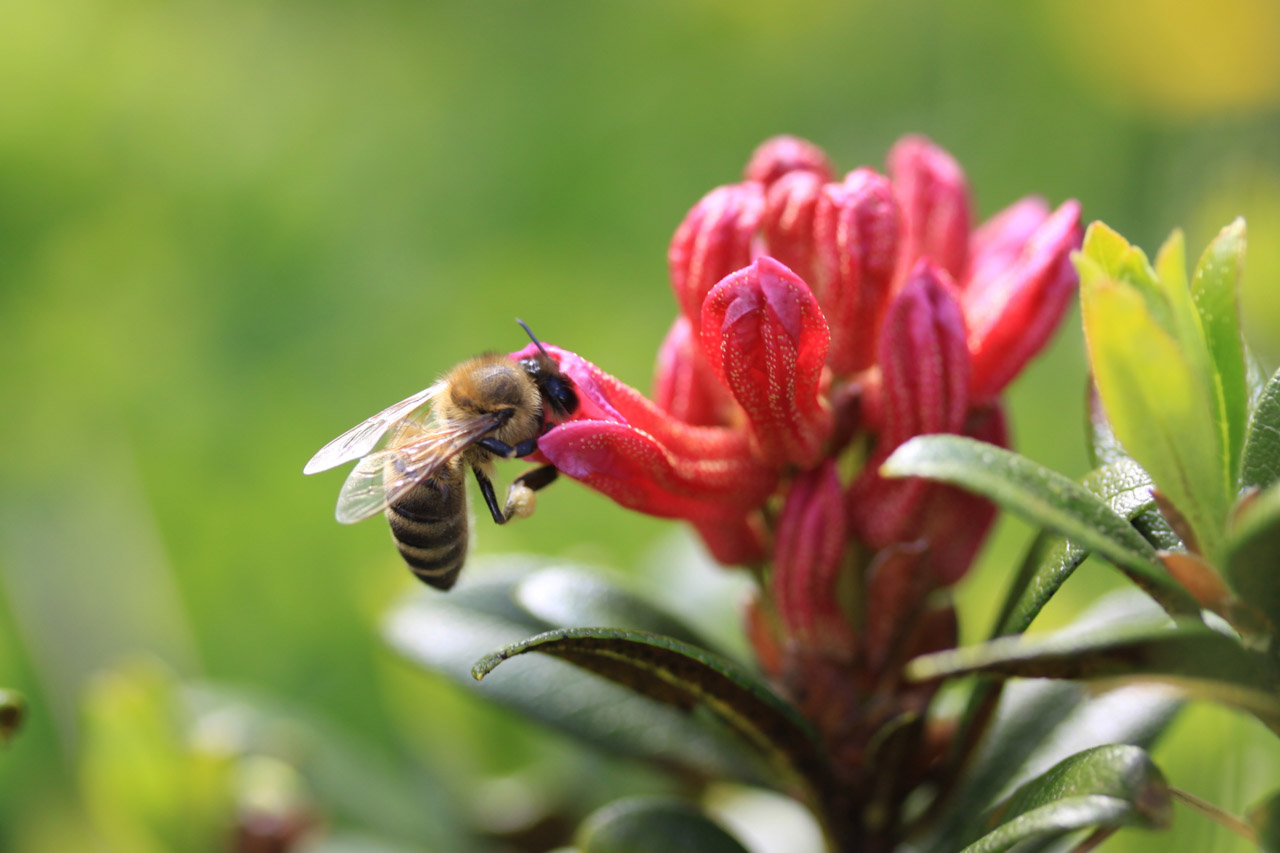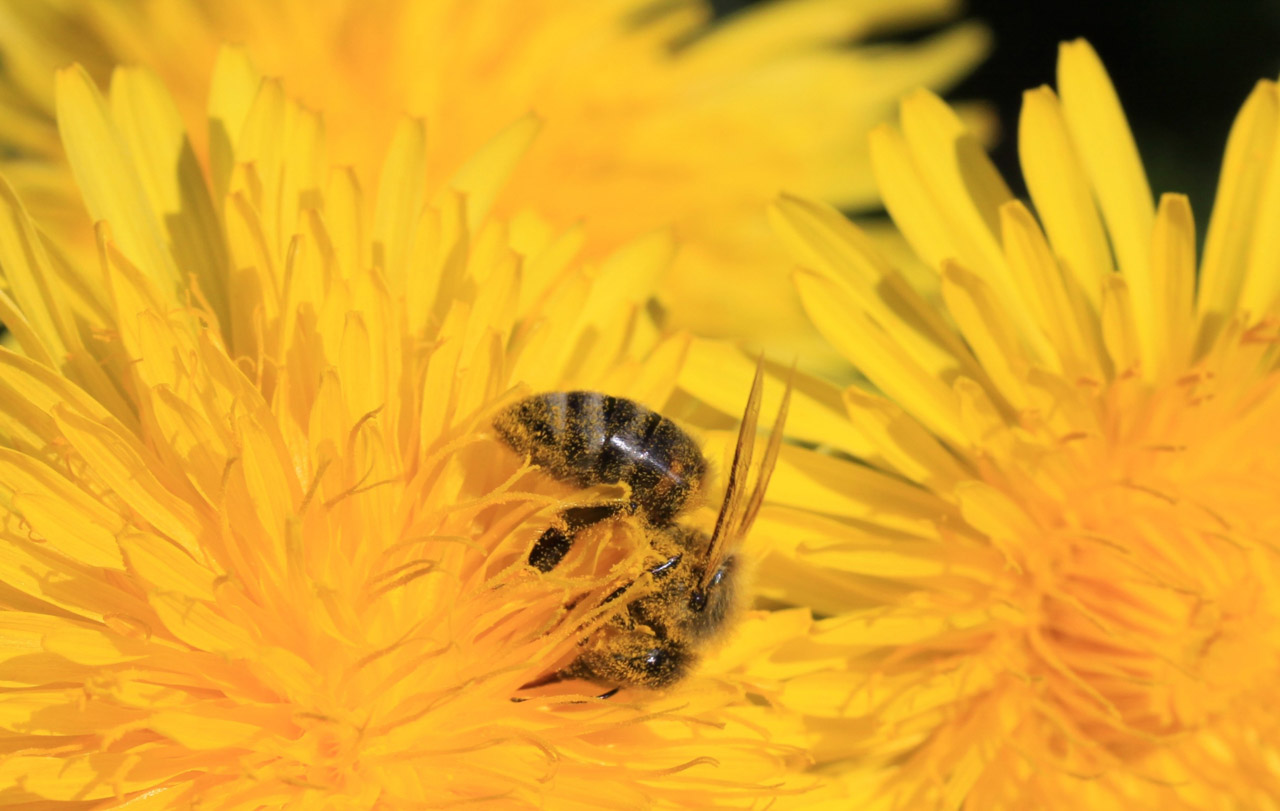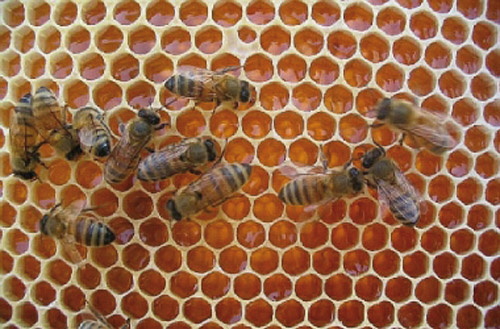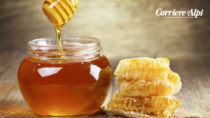Description
Miele delle Dolomiti Bellunesi PDO is honey produced with nectar taken from flowers in the mountainous area of Belluno by the local bee species Apis Mellifera; based on the periodical flowering in the production area, the honey is subdivided into the following typologies: Millefiori (Polyfloral), Acacia, Tiglio (lime), Castagno (chestnut), Rododendro (rhododendron) and Tarassaco (dandelion).
Production Area
The production area of Miele delle Dolomiti Bellunesi PDO is within the entire territory of the Province of Belluno, in the Veneto region.
Production Method
The honey begins to form when the foraging bee returns to the hive and passes a drop of the raw material it has collected (trophallaxis) to a bee in the hive. This action alone causes a reduction in the water content and enriches the nectar with the bee’s glandular secretions, determining a series of chemical transformations in the sugars. The hives in which Miele delle Dolomiti Bellunesi PDO is produced are permanent, although they can be moved periodically on the condition that they remain within the production area. The honey is extracted directly from the honeycombs with centrifugal honey extractors. The bees are kept away while the honeycombs are removed, using methods that do not involve the use of substances which could alter the product. The extraction period varies according to the typology of honey, and also in order to obtain a differentiated monofloral honey. In fact, the harvest takes place in successive stages and in conjunction with the different blooms.
Appearance and Flavour
Miele delle Dolomiti Bellunesi PDO is differentiated by the different typologies. Millefiori (or Multiflora) has a pale yellow to amber colour, with a sweetish mellow flavour and a strong tendency towards fine and homogenous crystallisation; the Acacia (or Robinia) honey is pale straw-yellow and clear, with a delicate and very sweet flavour; the aroma is reminiscent of locust flowers; it is typically liquid; the Tiglio honey has a variable colour ranging from yellow to greenish, with a sweet flavour that has a slightly bitter aftertaste; it has a fresh, minty and balsamic aroma and a pasty appearance with delayed crystallisation; the Castagno variety is dark brown in colour, with a slightly sweet, bitter flavour and a sharp aromatic aroma; it is initially liquid and then turns pasty; the Rododendro honey ranges from clear to white or light beige in colour after crystallisation, with a delicate flavour and fruity aroma; it initially has a liquid consistency and then becomes pasty with fine grains; the Tarassaco variety has yellow reflections and is slightly or averagely sweet, generally tart and slightly bitter, with a liquid or fine crystalline consistency.
History
Beekeeping and the use of honey in the Belluno area is well documented. In a price list from 1712, three different types of honey on the market are registered: “miele di fiori d’alta alpe” (high mountain flower honey), “miele di brugo” (heather honey), “miele de bosco misto” (mixed woodland flower honey). The use of honey in the traditional local cuisine is documented in anonymous documents containing recipes from about 1580, and others, more numerous, from the 1600s onwards. In a few local ethnographic museums, there are rudimentary apiaries dating back to the early years of the last century.
Gastronomy
Miele delle Dolomiti Bellunesi PDO should be stored away from direct light and heat sources. It pairs well with cheeses from the production area, such as Piave PDO, but is also used as an ingredient in local Belluno dishes and desserts.
Marketing
The product is marketed as Miele delle Dolomiti Bellunesi PDO in the following typologies: Millefiori, Acacia, Tiglio, Castagno, Rododendro and Tarassaco. It is sold year-round in glass jars weighing 250, 500 or 1000 gr, closed with a metal cap and sealed with a label. It can also be found in single serve glass jars or other suitable packaging.
Distinctive Features
Miele delle Dolomiti Bellunesi PDO is distinguished by the wide range of colours and flavours linked to the high biodiversity of the flora in the Province of Belluno, a characteristic that is associated with the producers specialised knowledge.
















